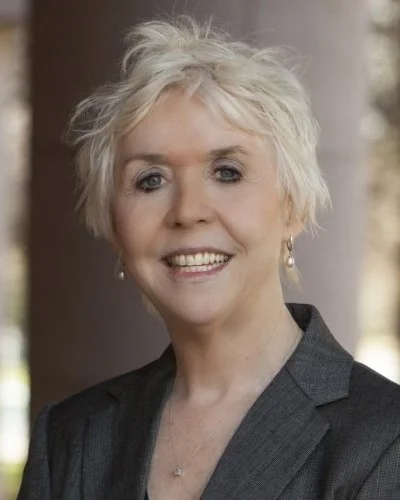
Leading the movement for evidence-based education worldwide.
What is IMA?
The International MTSS Association (IMA) unites educators, leaders, researchers, and agencies to turn evidence into action. We strengthen prevention-first MTSS systems and leadership capacity so every student, in every setting, has access to the instruction and supports needed to succeed.
Our Vision
Uniting research, practice, and policy to advance evidence-based systems and strengthen leadership worldwide so that every learner thrives.
Our Purpose
The International MTSS Association exists to build global capacity for delivering effective, equitable tiered systems of academic, behavioral, and social-emotional support by integrating research, practice, and policy.
“MTSS provides a coherent framework that connects all aspects of teaching, learning, and support. It’s time for the global education community to come together around this shared language of systems improvement.”
— Sharon Vaughn, Ph.D., University of Texas at Austin
IMA Distinguished Advisor
“The power of MTSS lies in collaboration — research, practice, and policy working in harmony. IMA is creating the structure for that connection to thrive.”
— Steve Goodman, Ph.D., National Technical Assistance Center on PBIS
IMA Distinguished Advisor
“MTSS isn’t a program — it’s a process. When implemented with integrity, it becomes the structure that allows every student to receive exactly what they need, when they need it.”
— Matthew K. Burns, Ph.D., Professor, University of Florida
IMA Founding Board of Directors
“When we use research-based instructional practices, we increase the likelihood that every student will be successful.”
— Anita L. Archer, PhD, Author, Educational Consultant, and Literacy Expert
IMA Distinguished Advisor
IMA provides leaders with clear standards, a trusted “What Works” mark, and year round access to evidence and experts so research can translate into better outcomes for all learners.
Shared Standards: A unified, research aligned set of MTSS essentials that brings clarity and consistency to implementation.
What Works Mark: A simple, trusted indicator of practices and tools aligned with the science of learning.
MTSS Action Network: A free monthly gathering for leaders, TA providers, and researchers offering just in time mentorship, clarity, and resource exchange.
As a result, leaders improve schools and districts with greater confidence and effectiveness so students receive the right support at the right time.
Equipping Educators and Leaders at all Levels
Translating Evidence into Impact
We translate complex research into clear, practical tools that educators and leaders can use with confidence. Our goal is to make high quality science accessible, actionable, and connected to the daily work of schools.
Clarifying what works in MTSS: Concise evidence summaries and decision guides that define what MTSS is, and is not, so leaders can organize resources effectively for students.
Resource Hub: A curated entry point to trusted research, open access materials, and vetted tools—free from sales pressure and built for real learning.
Journal of MTSS: An open access, peer reviewed journal that brings rigorous research directly to practitioners, consultants, and system leaders.
MTSS Leadership Academy and Toolkits: Virtual learning, micro courses, and ready to use templates that help leaders and consultants apply evidence with clarity and consistency across classrooms, schools, districts, and systems.
Shaping the Future of MTSS, Together
IMA’s Global Summit brings together educators, leaders, researchers, and policymakers from around the world to learn, problem solve, and build coherent MTSS systems grounded in evidence. Designed through the lens of implementation science, the Summit is a new kind of professional learning experience—practical, collaborative, and focused entirely on what works.
First-Ever MTSS Hall of Fame: Honoring the scholars, practitioners, and leaders whose contributions have shaped the field.
Partners in Practice Sessions: Real stories from schools and districts leading change, sharing what implementation truly looks like.
Problem-Solving Session: Expert consultants and peer schools working side by side to tackle real challenges and identify actionable solutions.
Global Networking: Cross-role collaboration that breaks down silos and builds lasting professional connections.
The Global Summit is the place for anyone committed to strengthening systems and moving proven practices into every classroom.
Become a Member Today!
When you join the International MTSS Association (IMA), you become part of a global community committed to advancing evidence based, equitable systems of support. Membership connects you with leaders, researchers, and practitioners working together to strengthen MTSS, build collective capacity, and ensure every learner has access to the support they need to thrive.
Together, we unite research and practice to shape the future of education.
Want to learn more about MTSS?
-
A prevention-first framework that organizes instruction and supports into tiers using universal screening, progress monitoring, multi-level prevention, and data-based decision making to improve outcomes for all students (Center on Multi-Tiered System of Supports, n.d.; Fuchs & Fuchs, 2006).
-
RTI and PBIS are earlier multi-tier models focused on academics and behavior, respectively. MTSS integrates these domains into one coherent system across academics, behavior, and social-emotional learning (Center on Multi-Tiered System of Supports, n.d.; Fuchs & Fuchs, 2006; Sugai & Horner, 2006).
-
Meta-analyses and multi-year field studies show that RTI/MTSS models improve student outcomes and system performance when teams use student-response data and implement with fidelity (Burns, Appleton, & Stehouwer, 2005; VanDerHeyden, Witt, & Gilbertson, 2007).
Practice guides further specify evidence-based routines for implementation (Gersten et al., 2009; Foorman et al., 2016).
-
You’re on track when these system features are in place and used consistently:
Universal screening for all students on a set schedule with valid measures.
Evidence-based Tier 1 instruction as the protected core for every student, with routine checks that most students are meeting benchmarks.
Targeted (Tier 2) and intensive (Tier 3) interventions available and matched to need, with clear entry/exit criteria.
Progress monitoring at appropriate intervals to see if students are responding—and to adjust quickly when they’re not.
Team-based, data-driven decisions using agreed-upon decision rules during scheduled problem-solving meetings.
Fidelity of implementation verified (e.g., observation/checklists) with feedback cycles to improve practice.
(See Center on Multi-Tiered System of Supports, n.d.; National Center on Response to Intervention, 2010; Hamilton et al., 2009.)
-
MTSS replaces referral-only, subjective decisions with scheduled, team reviews of data and validated practices, which reduces bias and matches support to actual student need (Center on Multi-Tiered System of Supports, n.d.; Fuchs & Fuchs, 1998).
Instead of “who gets referred,” teams look at who is responding to instruction and adjust intensity accordingly—what Fuchs & Fuchs term treatment validity—so resources are allocated based on evidence, not impressions.
Key ways MTSS drives equity in decisions:
Universal screening & multiple measures for all students on a set cadence
Clear decision rules (with disaggregated data) to trigger support and prevent subjective gatekeeping
Evidence-based interventions with fidelity checks, so teams know if practices were delivered as intended
Progress monitoring & rapid adjustments based on student response, not labels or tradition
These routines make decisions transparent, replicable, and improvement-focused across classrooms and schools (Center on Multi-Tiered System of Supports, n.d.; Fuchs & Fuchs, 1998; Hamilton et al., 2009).
-
1997–2004 — Foundations & policy
Early multi-tier approaches in academics (RTI) and behavior (PBIS) emphasized response to instruction (treatment validity) and progress monitoring; IDEA 2004 allowed RTI for SLD identification, accelerating data-based support (Fuchs & Fuchs, 1998; Individuals with Disabilities Education Improvement Act of 2004; Sugai & Horner, 2006).2010s–present — Integration
Systems increasingly integrate academics, behavior, and SEL into one framework with shared essentials: universal screening, strong Tier 1, targeted/intensive tiers, progress monitoring, team decisions, and fidelity (Center on Multi-Tiered System of Supports, n.d.; National Center on Response to Intervention, 2010; Hamilton et al., 2009; Gersten et al., 2009; Foorman et al., 2016).
“When we educate every child, we change the trajectory of communities, nations, and generations.”
— Author Unknown








